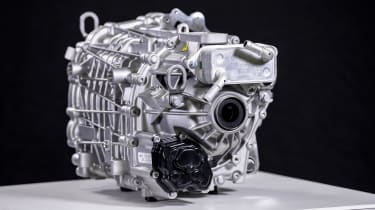Electric-car conversions: can I build my own electric car?
The idea of carrying out your own electric-car conversion seems tempting, but you’ll need specialist knowledge and it won't be cheap

Electric-car conversions have been around for some time now. In fact, founder of the Rimac electric supercar brand, Mate Rimac, famously started out by converting an 80s BMW 3 Series to electric power at home. He then went on to break several electric car world records with his BMW, which served as the foundation on which he built his name in the EV business.
There are quite a few reasons why converting a combustion-powered car to electric is appealing. Unlike a petrol or diesel engine, an electric motor produces all of its torque almost immediately, so a car converted to electric power could have much stronger acceleration than it did originally. Other big draws are the lower running costs and zero tailpipe emissions attributed to electric vehicles – and, if you decide to convert a classic car, you can combine its retro looks with the benefits of a modern electric powertrain.
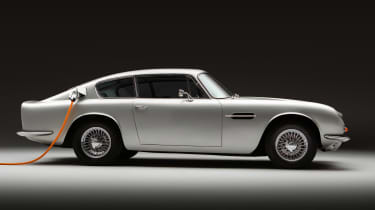
At first, electric car conversions were very niche propositions, and were typically only carried out by a small number of classic car conversion specialists like Lunaz (pictured above), Everrati and Electrogenic. Today, you’ll find plenty more electric conversion firms out there, though while some offer conversions for more modern cars like the previous-generation Land Rover Defender, most still focus more on classic vehicles. Thankfully, quite a few companies offer DIY conversion kits for electric cars, and the improved availability of battery modules, controllers and electric vehicle motors have made home-build conversion projects much more practical.
How much does it cost to build your own electric car?
While more budget-friendly EVs are arriving in showrooms these days, price is still a major barrier for many drivers who want to make the change to electric power. It’s a similar story when it comes to the conversion market. The price of a professional converted classic depends heavily on the amount of traditional work required to revitalise a car – such as renewing the body and upholstery for instance – and that’s on top of buying it in the first place, and the new powertrain.
That means, once you’ve factored in engineering, electronics and batteries, a turnkey conversion can cost anywhere from around £35,000 for a classic Mini from London Electric Cars to hundreds of thousands for something more exotic. Prices for conversions performed by specialists like Lunaz can even start from close to £1 million.
But if you don’t want to spend that much, an electric conversion kit could be the answer. Prices can vary from £6,000 for a basic kit and into six figure territory for more elaborate setups, but with a growing number of companies offering these kits, the choice available is expanding. Be aware, though, that it won’t be a simple job, and you should still get the help of an experienced mechanic if you plan to use a kit.
With enough time and the means to do so, it is possible to convert a car to electric power by yourself. However, since you’ll be working with complex electrical components, you should only consider this route if you’re a trained technician and you know what you’re doing. If this doesn’t apply to you, we recommend you get professional help to either install the kit for you, or to carry out all of the necessary work.
Electric-car conversions: how do they work?
First, you need to find a car to start with. Something light is ideal, as extra weight will make your electric car slower while reducing its range. Ideally, you also need something that doesn’t have power steering or power-assisted brakes, as these are typically powered by the engine and require extra components to retain their function during a conversion. Then you need to strip out anything engine-related: that means getting rid of the fuel tank, the exhaust, the engine, the starter motor, the radiator, the coolant tank, the fuel lines and several other components besides.
Keep hold of the transmission, though: you’ll need this to direct the power from an electric motor (these can be bought fairly cheaply on the secondhand market) to the wheels. You’ll also need to make an ‘adaptor plate’ to line up the motor and the transmission, and source a ‘coupler’ to connect the motor’s rotary power to the transmission.
Then you’ll need to get hold of some battery cells. As a bare minimum a stack of 12v batteries will do in a very basic conversion, but for more power and capacity there are suppliers out there who can supply new lithium-ion cells, much like you’d find in modern EVs. An affordable alternative is using a ready-made battery from a cheap used electric car, such as a Nissan Leaf or Renault ZOE – a repurposed electric car battery will typically be cheaper to buy than a brand-new one, and you’ll help cut down on battery waste.
Regardless of where you source your battery from, do bear in mind that, like all of the other components, these need to be anchored securely in place. Another key component is a controller: this controls the power running between the batteries and the electric motor. The higher the amperage, the faster and more efficient your converted electric car will be, so buy the best one you can afford.
Those are the main considerations. If you’re likely to drive when it’s cold, you may want to consider how to make up for the lack of a heater, which in a normal car uses excess engine heat to keep the interior warm when required. The same suppliers that specialise in batteries, motors and controllers can probably supply you with an electric heater, too.
Buying an electric-car conversion kit
If you need to source parts, there are companies that provide a full set of everything that you’ll need. For example, the website everything-ev.com has a range of electric-car conversion kits suited for different-sized cars: these start from around £6,000 for a basic, generic conversion kit and rise in cost depending on how heavy your vehicle is and if you go for a more tailored model-specific option.
Felten is another company that offers a range of conversion kit options which start from £15,000 and can cost up to £65,000 for more powerful performance specifications. The kits use Tesla motors and battery modules, and there are drop-in kits for classic Minis, 964-series Porsche 911s and Land Rover Defenders. If you don’t need an off-the-shelf kit for your conversion project, Felten also supplies plenty of EV components for you to cherry pick everything you need.
Electrogenic, the Oxford-based classic car conversion specialist, has created its own electrification kit for old Land Rover Defenders. For a little under £29,000, the kit includes 52kWh battery pack that gets fitted under the bonnet and powers a 120bhp electric motor. The kit has been designed for working vehicles, particularly those in agriculture, with the Defender's original gearbox and all-wheel-drive system preserved during the conversion to ensure no loss in off-road capability.
Another option is the Swindon Powertrain Classic Mini kit, which is effectively the kit used by the British company in its Swind E Classic converted Mini. The package comprises an HPD E Powertrain system mounted to an original classic Mini front subframe featuring brackets specifically designed for this installation. It also includes purpose-designed inner CV joint housings that allow the fitting of standard Mini driveshaft assemblies and comes with a standard differential (an optional limited-slip differential available).
This can be used in isolation or in addition to a range of aftermarket Swindon Powertrain components such as a 12kWh battery pack, motor controller, on-board charger and DC-DC converter. Swindon describes it as being "suitable for classic-car enthusiasts, specialists or conversion businesses that want to electrify a classic Mini", and you’ll need the best part of £15,000 to get hold of everything you need.
In November 2021, Ford announced that it would offer the motor used in its Mustang Mach-E electric SUV in 'crate' form (above) to enthusiasts and companies looking to carry out conversions. Ford showcased its new electric crate motors by fitting two into a classic F-100 pickup that it called the 'F-100 Eluminator', which had a total of 480bhp and 860Nm of torque on tap. The electric motor is available to buy in the US from Ford Performance Parts for US$4,340 (approximately £3,400 at the time of writing).
Do I need to fill out some paperwork?
The short answer is yes. The DVLA has a long and convoluted process for registering ‘radically altered vehicles’, which you must complete before your converted electric car is allowed on a public road. First, you must follow the DVLA’s instructions for registering a new vehicle, providing a ‘built-up vehicle inspection report’ (known as a V627/1 form), evidence of type approval if needed, the original vehicle’s registration certificate, receipts for any parts used in the conversion, plus photographs of the vehicle.
A points system is used to determine what registration number your car will receive. You must qualify for at least eight of them on the DVLA’s parts list in order to keep the original registration number, and five of these must be awarded for having an unmodified chassis, monocoque or frame. Further points are awarded for having the original suspension at the front and back (two points), axles (two points), transmission (two points), steering assembly (two points) and engine (one point).
If you fail to meet these criteria – or if you’ve welded two vehicles together as part of your conversion – you must gain type approval in order to earn a registration number prefixed with a ‘Q’. For this, you’ll need to go through the Individual Vehicle Approval (IVA) scheme, which involves having your vehicle inspected thoroughly at a DVSA-approved provider of ‘designated technical services’. You’ll also need to provide documents as evidence.
On top of all that, you’ll need to get a model report costing hundreds of pounds, and ensure that you fill in the correct application form. In short, an electric-car conversion is a tall order if you’re not already familiar with UK regulations and procedures.
Can someone convert an electric car for me?
Yes – there are a number of companies that offer electric-car conversions, as the idea of electrifying automotive icons have become more popular in recent years. Although, these companies tend to be focused on classic and high-performance cars, and as we’ve said, enlisting the services of these companies can be expensive.
For example, Oxford-based conversion specialist Electrogenic has created zero-emissions versions of everything from the iconic Mini to the original Citroen DS. The company also offers packages for the classic Jaguar E-Type, however, these start from £54,000 and quickly rise to £80,000. Plus, those figures don’t include a donor vehicle or VAT.
Everrati is a similar company that focuses on "upgrading glamorous vehicles from the past with electric powertrains and a compassionate makeover". One of its higher-end models is a 500bhp pure-electric Porsche 964 with a widebody kit that’s capable of 0-62mph in less than four seconds. It starts at £290,000 before taxes.
Even mainstream brands like Aston Martin and MINI have also started offering similar packages so customers can have electric versions of their historic models.
Most Popular
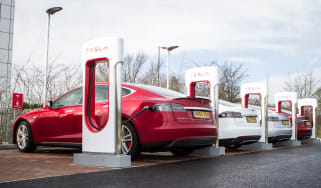
Tesla Supercharger Membership fee cut with 42 charging sites open to all EVs
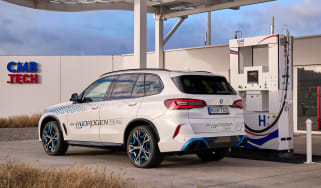
Where can I buy hydrogen and where is my nearest hydrogen filling station?
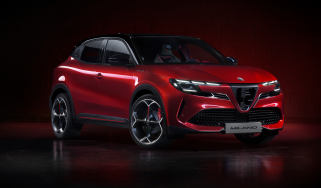
New Alfa Romeo Junior: the baby electric SUV formerly known as Milano
